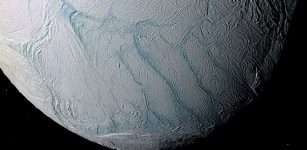Saturn’s Rings Are Most Likely Less Than 100 Million Years Old
MessageToEagle.com – In the final phase of NASA’s Cassini mission, the spacecraft dived between Saturn and the innermost ring, at altitudes 2600-3900 km above the cloud tops. During six of these crossings, a radio link with Earth was monitored to determine the gravitational field of the planet and the mass of its rings.
Astronomers made the first accurate estimate of the amount of material in the planet’s rings, weighing them based on the strength of their gravitational pull.

The rings are relatively recent, having originated less than 100 million years ago and perhaps as recently as 10 million years ago.
Their young age puts to rest a long-running argument among planetary scientists. Some thought that the rings formed along with the planet 4.5 billion years ago from icy debris remaining in orbit after the formation of the solar system. Others thought the rings were very young and that Saturn had, at some point, captured an object from the Kuiper belt or a comet and gradually reduced it to orbiting rubble.
The new mass estimate is based on a measurement of how much the flight path of Cassini was deflected by the gravity of the rings when the spacecraft flew between the planet and the rings on its final set of orbits in September 2017.
“The first time I looked at the data I didn’t believe it, because I trusted our models and it took a while to sink in that there was some effect that changed the gravity field that we had not considered,”Burkhard Militzer, a professor of earth and planetary science at the University of California, Berkeley, who models planetary interiors, said a press release.
“That turned out to be massive flows in the atmosphere at least 9,000 kilometers deep around the equatorial region. We thought preliminarily that these clouds were like clouds on Earth, which are confined to a thin layer and contain almost no mass. But on Saturn they are really massive.”
The team also calculated that the surface clouds at Saturn’s equator rotate 4 percent faster than the layer 9,000 kilometers (about 6,000 miles) deep. That deeper layer takes 9 minutes longer to rotate than do the cloud tops at the equator, which go around the planet once every 10 hours, 33 minutes.
Earlier estimates of the mass of Saturn’s rings — between one-half and one-third the mass of Mimas — came from studying the density waves that travel around the rocky, icy rings.
These waves are caused by the planet’s 62 satellites, including Mimas, which creates the so-called Cassini division between the two largest rings, A and B. Mimas is smooth and round, 246 kilometers in diameter.
MessageToEagle.com










